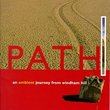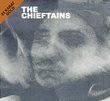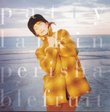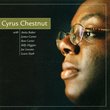| All Artists: Claude Debussy, Jean-Efflam Bavouzet Title: Debussy: Complete Works for Piano, Vol. 2 Members Wishing: 1 Total Copies: 0 Label: Chandos Original Release Date: 1/1/2008 Re-Release Date: 1/15/2008 Genre: Classical Styles: Chamber Music, Forms & Genres, Ballads, Short Forms, Suites, Historical Periods, Classical (c.1770-1830), Modern, 20th, & 21st Century Number of Discs: 1 SwapaCD Credits: 1 UPC: 095115144329 |
Search - Claude Debussy, Jean-Efflam Bavouzet :: Debussy: Complete Works for Piano, Vol. 2
 | Claude Debussy, Jean-Efflam Bavouzet Debussy: Complete Works for Piano, Vol. 2 Genre: Classical
No Description Available. Genre: Classical Music Media Format: Compact Disk Rating: Release Date: 8-JAN-2008 |
Larger Image |
CD DetailsSynopsis
Product Description No Description Available. Genre: Classical Music Media Format: Compact Disk Rating: Release Date: 8-JAN-2008 Similarly Requested CDs
|
CD ReviewsPlaying Filled With Atmospheric Vision! Raymond Vacchino | Toronto, ON. Canada | 02/20/2008 (5 out of 5 stars) "It is not idle to inspect the long and powerful movement, mostly German, which first establish the fact that the Romantic movement, by the time of Debussy's adulthood, had passed its culmination, exhausted its powers temporarily at least, and was branching afield to try to renew its tarnished glory and exasperated energies.
Debussy was quick to realise this situation and to grasp both its dangers and challenges. In this CD performed by Bavouzet, we find a truly French artist demanding clarity and logic as a basic aesthetic consideration which makes him discard the romantic tradition, all chaos in structure and the amount of subjectivity. In the Ballade, Bavouzet furnishes the obvious stimulus to a Slavic ballade which contains the basis of the theme Debussy was later to use in "La plus que lente." Melodically the Ballade is unduly repetitious, yet Bavouzet provides a performance that is eclectic, incisive in thought and offers certain aspects of Russian melodies and modulations that convey pianistic instrumentation. The sketch of "D'un Cahier D'esquisses" was not really intended as a piece. It is however, a very rich sketch from the notebook of a genius. When Debussy wrote it, he was under the charm of "The Sea," and Bavouzet truly does not fail to find many of the tonal impulses which are at the core of the score of "La Mer", and contains the seeds of the thematic material of the great orchestral poem. The first performance of "Estampes" was given on January 9th, 1904, and follows the development of tonal texturing. Bavouzet perceives its ever increasing richness, the ability to transform into music the most abstract vision in an amazing way. He conveys the exact modal colour, the exact rhythmic counterpoint, and the most telling architecture to compel us to share Debussy's vision to the utmost. It is strange to reflect that only three of the six "Images" are performed with any degree of frequency and that these do not enjoy the remarkable popularity which they should. In performance, Bavouzet brings a demanding element of imagination and a greater transformation from ordinary events. Their appeal is considerably richer, but also the less easily accessible. Time and thought will remedy this factor, as it will also do in the case of the "Etudes." "L'isle Joyeuse", is one of the most orchestrally conceived piano works. Bavouzet takes a more modern approach which represents an equivalent to the Lisztian endeavor in piano literature. He makes use of modern texturing and it is indeed imbued with the gaiety, animation, and sensual atmosphere of the Watteau painting. It is indeed probable that "Masques", was primarily intended to be a part of the "Suite Bergamasque." Bavouzet successfully reflects the necessary freshness and youth along with obvious thoughts of the personages of the Italian comedy and mischievous characters. "Suite Pour Le Piano", is a major landmark in the history of piano literature, and perhaps one of the most significant masterworks in this form. Bavouzet's playing is crowning throughout. It is playing that is freed from empty mechanistry, stuffy display, but does not fall into license. He recaptures gaiety, fluency, and charm, rhythmic life and novel harmonic energies. In "Danse (Tarantelle Styrienne)", Bavouzet conveys his highly creative individuality from the standpoint of melody, voice-leading, harmony, and rhythm the "Danse" is already definitely stamped by Debussy's personality. "Valse Romantique," indicates a very early time, perhaps even earlier than any of the other pieces considered here. Bavouzet conveys the influence of Chopin to a certain extent. It is somewhat experimental as to harmonic colour, but Bavouzet's inventiveness and imagination brings sufficient magnitude of the future compositions to come. This recording is totally enjoyable with each performance marked by remarkably clear textures and atmospheric character. The melodies are refined reflecting the outstanding acoustic qualities, finesse, revelatory clarity, and compelling persuasiveness throughout. Bavouzet's playing is impeccable and his innate understanding of the idiom is miraculously true. Author: Raymond Vacchino M.Mus. A.Mus. L.R.S.M. Licentiate (honorary)" |

 Track Listings (15) - Disc #1
Track Listings (15) - Disc #1








